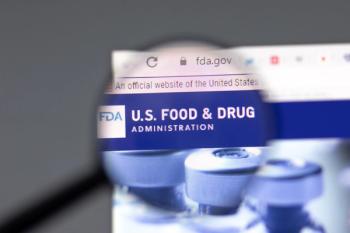
- Applied Clinical Trials-11-01-2013
- Volume 22
- Issue 11
Modeling Successful Phase III Trials
Pharmacometrics optimizes the use of Phase II data to support Phase III success.
3.
The past decade has seen tremendous growth in the use of pharmacometric methods to inform drug development and regulation. Modeling, simulation, and related decision-analysis tools have evolved from academic explorations to become mainstays in US and European regulatory review1, 2, 3 and the subject of industry focus around the globe.4 Current guidances from US and EU regulatory authorities encourage the development of informative drug-disease-patient models, quantitative utility indexes, and strategic dose and trial simulations to explore available knowledge from all sources. These pharmacometric tools enhance communication within a sponsor company, as well as between sponsors and regulators, and provide a fully-informed, scientific basis for decision making.
Pharmacometric methods are particularly powerful assets when used to build a comprehensive knowledge base of preclinical, early-phase, literature, and competitor data. That knowledge base supports optimization of later-phase trial designs and enables earlier, more confident go/no-go decisions—maximizing the likelihood of Phase III and ultimate commercial success.
Benefits
Drug sponsors that invest in pharmacometrics experience fewer surprises and a more certain path to success—as well as early recognition of failures, for quicker no-go decisions. As target indications and drug benefit/risk profiles have increased in complexity, pharmacometric insights have become essential to understanding new drug candidates and deciding whether to proceed with large-scale trials. Pharmacometric methods integrate all available knowledge of the study drug, disease, subjects, and clinical trials at each phase of development. These model-based approaches combine literature, competitor, and trial data, enabling direct, quantitative evaluation of tradeoffs in treatment approach, target population and indication, and trial designs.
The resulting knowledge framework provides a rich, quantitative basis for development decisions and a platform for earlier and more informative communication with regulators. Regulators have come to expect pharmacometric analyses in submissions, and apply modeling and simulation themselves to evaluate study designs, labeling, and approval decisions, especially for cases that are difficult or impossible to study directly in clinical trials.1, 2
As an organization's pharmacometric knowledge base grows in a given therapeutic area, it can improve efficiency across related development programs. Drug sponsors collect the benefits in cost and time savings, reduced Phase III failures, and a faster and more confident path to regulatory approval.
The pharmacometric toolkit
Pharmacometrics encompasses a variety of mathematical and statistical methods to combine and examine all sources of information about a candidate drug. Probabilistic, Bayesian models of the drug, disease, patients, and trial gather knowledge from disparate sources into a quantitative framework for exploring benefit/risk profiles and potential sources of variability. Monte Carlo simulations using those models facilitate science-based decisions by testing "what if" scenarios for dosing and trial designs, and exploring the impact of assumptions about the drug and patient population on outcomes. Utility indexes capture available knowledge and expert opinion to form objective benefit/cost evaluations.
Over the course of development, these analyses grow more certain and more precise as new data become available. By the end of a well-designed Phase II program, these analyses can predict Phase III outcomes with high and explicitly quantified certainty,5, 6, including outcomes for doses and populations not yet studied.7, 8
Observed distributions of prior data from preclinical and early clinical trials—as well as the literature on the target indication and competitors—enable creation of drug, disease, and patient models illustrating very complex drug profiles. The data needn't be richly sampled. For example, population pharmacokinetic (PK) methods may be used to estimate a dose-response relationship based on sparse effect data from Phase I and IIb, by pooling data from multiple early-stage trials and literature data on the disease.9 Models of the dose-concentration and exposure-response relationship for biomarkers or clinical outcomes help quantify potential influences of drug/drug and drug/food interactions, age, concomitant disease, and other subject and pathophysiological traits to aid selection of Phase III study populations.
Dose and trial simulations drawing on this model framework test assumptions and "what if" scenarios for patient and trial outcomes. Highly realistic evaluations of product profile and competing trial designs are possible by including published dropout data, placebo effect models, dose-exposure-response comparisons with competitors, and more. "Intent to treat" simulations include probabilities for patient compliance to estimate the impact on outcomes. By exploring assumptions and options, the simulation team can aid selection of optimal Phase III trial power, dosing and sampling schemes, and adjustments for important subpopulations.
How pharmacometrics supports Phase III success
Pharmcometric methods both quantify and help reduce the high uncertainty of early clinical development. This section explores practical examples and regulatory perspectives demonstrating how pharmacometric methods can provide a better-informed, quantitative basis for decisions that will impact costly late-phase trials.
Linking biomarkers to outcomes. Disease-specific, drug-independent models linking biomarker response to specific clinical endpoints can support Phase II study design and evaluation, as well as go/no-go decisions for Phase III.10, 11, 12 Such analysis can be especially useful in bringing together preclinical and clinical data to better predict drug actions based on limited information. As Phase II progresses, models can be updated with newly available data to more precisely estimate the drug's risk/benefit profile.
For example, modeling and simulation helped to predict Phase III outcomes based on tumor growth from Phase II as a biomarker for outcome.5 Another recent study demonstrated that time to tumor growth in colorectal cancer predicted the long-term clinical endpoint of overall survival better than other measures, and fully described the therapeutic benefit of a new treatment.10
Such models prove useful for simulating outcomes for new treatments based on early proof-of-concept (Phase Ib and Phase IIa) data, and for evaluating a candidate versus placebo and standard therapy. In the colorectal cancer example, combining modeling with longitudinal tumor-size data could improve trial design and analysis for more informative early clinical studies, and enable oncology researchers to select the most promising treatments to reduce the high attrition rate in Phase III oncology trials.
Bridging formulations. A well-constructed model can help researchers anticipate drug exposure and response as well as drug/drug and drug/food interactions for unstudied formulations.
In one such case, the development team for a hyperlipidemia agent set Phase III dosing for a new tablet formulation based on early clinical studies of a liquid-filled capsule.13 Population PK models based on three Phase I trials and one Phase IIb study illustrated differences between the two formulations and quantified variability in apparent drug bioavailability with food intake. Complementary pharmacodynamic (PD) modeling captured variability in response with subject characteristics and provided evidence that the new drug acted independently when co-administered with a statin.
Trial simulations based on the models indicated Phase III outcomes would be robust against subject dietary variation as long as subjects adhered to a low-fat regimen. The simulation results supported the choice of Phase III dose regimen using a dosage and formulation not studied in prior trials.
Optimizing trial design. The value of pharmacometrics is apparent in its impact with regulators during trial design evaluations. FDA design reviews for pediatric and late-phase trials employ quantitative approaches to plan dose selection, justify sample size, and evaluate endpoints to improve chances of trial success.1 Similar practices are encouraged in the EU.2
In European Clinical Trial Applications, as in US submissions, modeling can be used as evidence to support proposed doses for clinical study. For later phases, such as dose-response studies, clinical trial simulations based on exposure-response models can justify dose selection. European regulators note this approach is highly encouraged because the analyses provide a rational basis for dose choice and help regulators to better understand safety and effectiveness.2 Simulations can also help to compare trial designs and may reduce failure rates, the regulators note.
Once dose/response and exposure/response relationships are established, modeling can provide a basis for dose adjustments based on patient-specific characteristics such as age, gender, or concomitant disease or medication.14 Such pharmacometric analyses can provide sufficient evidence for regulatory approval of not only trial designs, but also dosing regimens not studied in Phase III. This was the case for 21 of 198 NDA and BLA submissions reviewed by the FDA pharmacometrics group from 2000-2008.15
Simulations can also aid in optimizing sampling schemes. In a published example analysis, FDA pharmacometricians used clinical trial simulations to compare dose-response analyses for a pivotal efficacy trial.16 The group compared placebo-corrected (subtraction of placebo mean from observed treatment value) and placebo-anchored (placebo treated as dose 0) designs across a variety of dose strategies, sample sizes, and exposure-response assumptions—for example, different efficacies. The placebo-anchored analysis proved more powerful to show effectiveness across scenarios.
Getting a handle on variability and subpopulation effects. It is impossible to study every possible combination of subpopulation, drug/drug interaction, food interaction, concomitant disease, or medication. Pharmacometric analysis can provide confidence and convince regulators in instances when trial data are unavailable. Population methods are particularly useful to identify and plan for subpopulations that may process or respond to the drug differently.17 Such analyses can be invaluable to anticipate needed dose adjustments and potential subpopulation effects in large trials, and they have a marked impact on approvals.
In published cases, exposure-response analysis and/or trial simulations have clarified needed dose adjustments for specific subpopulations, or allowed the sponsor to bridge dosing from one formulation to another with known bioavailability to achieve target concentrations.15
These analyses can inform decisions for post-approval study. For example, given a known reduction in drug clearance in patients with renal impairment, dose adjustments for that subgroup were recommended and approved based on calculated target area under the time/plasma concentration curve as a measure of drug exposure, alleviating the need for additional study.15 In another case, FDA scientists applied modeling to identify subpopulation effects while evaluating recommended dosing for a monoclonal antibody in oncology.18, 19 Exposure-response analysis incorporating a case-control comparison identified a subpopulation in the lowest quartile for drug exposure that did not receive a survival benefit from treatment. This analysis identified an important subgroup needing additional study at higher doses.
Swedish regulators cite such population approaches as essential to extrapolate effectiveness and safety to unstudied subpopulations.2 In addition, they note that physiologically-based PK models (PBPK) can help address regulatory questions about potential influences of subject characteristics, concomitant disease, or drug/drug interactions on drug profile, including safety concerns.20 The FDA pharmacometric group has published information about best practices for such analyses.21
In US regulatory submissions, population PK analysis is expected for cases where subpopulations are likely to require altered dosing, the patient population is expected to be highly variable, or where the therapeutic window for exposure-response is narrow.9 Similar methods apply for population PD analyses. The FDA Guidance, Population Pharmacokinetics9 provides recommendations on when to use the methods, and how to use the results in estimating and reporting PK parameters and setting dosage adjustments.
Addressing small study populations. Rare diseases or pediatric indications that have small study populations present additional challenges. For example, as much as 50% of pediatric trials fail to show effectiveness.19 Pharmacometrics provides tools that are uniquely able to improve understanding of drug actions based on small studies.
In submissions for pediatric indications, exposure-response modeling can provide essential evidence of safety and effectiveness even with limited data. PK data alone can support pediatric approval and labeling if it can be clearly demonstrated that disease progression and exposure-response relationships are similar between pediatric and adult patients.1 For example, pediatric dosing for the antimicrobial Zosyn relied on matching drug exposure in children with effective levels in adults, with careful adjustments for differences in drug clearance in younger children.22 In a similar fashion, pediatric dosing adjustments can be estimated by comparing pediatric and adult exposure-response models based on either outcomes or biomarkers. Diseases that progress differently in children compared to adults generally require further clinical study.
To better account for biological changes, there has been a return to use of PBPK models to improve development efficiency in difficult to study populations, especially in pediatrics. For example, one study used sparse PK measurements in children, combined with known in vitro attributes of the drug and developmental changes in physiology, to model drug exposure in critically-ill children.23 By changing model assumptions and simulating exposure levels, the sponsor was able to explore potential physiological mechanisms underlying altered drug exposure in critically-ill children, and to identify differences in complex drug-drug interactions in pediatric, compared to adult patients, paving the way for improved pediatric dosing.
EU guidance addresses in general terms the need to use the best available techniques, including PK/PD modeling, in cases where data are scarce to make risk-benefit analysis possible.24 The guidance encourages careful use of Bayesian approaches, combining a reasonable variety of prior distributions with study data. In European Pediatric Investigation Plan applications, modeling is encouraged to support choice of dose.2 European regulators cite a need to elucidate pediatric exposure/response, to determine whether it is appropriate to aim for the same target exposure as in adults. Population modeling is recommended for products with sparse pediatric data, possibly combined with simulations to predict exposure in children. EMA regulators cite this as an area of change in regulatory thinking, and identify a need to expand the use of pharmacometrics in pediatrics toward PD as well as PK to address safety issues, concomitant disease effects, and provide quality mechanistic models to further research.25
FDA regulators have gone so far as to identify pharmacometric methods as not only useful, but necessary, in order to account for maturational changes in physiology when scaling dosing from adults to children and designing effective pediatric trials.26 The FDA also encourages the use of quantitative approaches to plan dose selection, justify sample size, and evaluate endpoints for better chances of trial success in pediatrics.1 Trial design reviews for pediatric and late-phase trials in the FDA employ these methods. FDA pharmacometricians review pediatric trial designs for sufficient number of study subjects and an informed trial design, based on prior exposure-response knowledge in adults and/or children, often as tested in clinical trial simulations. Agency scientists encourage collection of data to enable exposure/response analysis for maturational processes.
Streamlining regulatory interactions. Pharmacometric analyses can enable earlier and clearer alignment with regulators on development plans, trial designs, and submissions. As many of the preceding examples illustrate, a pharmacometric knowledge base provides a valuable platform to communicate and explore a drug profile with regulators across phases of development, particularly in planning for Phase III and crossing into new indications or dose scenarios.
End-of-Phase-IIa meetings with the FDA provide an important opportunity to ensure alignment with regulators on dose selection and design for pivotal trials,1 helping to avoid surprises further down the line. The FDA looks to the sponsor's exposure-response models and clinical trial simulations to demonstrate understanding of the drug, and potential sources of variability in subject response as trials move from volunteers to patients and real-world use. The agency may also conduct some modeling in-house to explore specific challenges in the development program, or to validate the sponsor's models.
The FDA guidance on end-of-Phase-IIa meetings "encourages sponsors to use all prior knowledge (including data and analyses, quantification of disease variability, subgroup heterogeneity, and dose (concentration)—response models in the development of computer simulations) to make more informed drug development decisions on trial design and dosage regimen selection."27
Pharmacometric dose-response studies and analyses can also provide primary evidence of effectiveness for drug registration28 and support approval in unstudied—but well understood—situations. For example, a new antiretroviral gained approval for use in an unstudied three-drug combination on the strength of prior PK data and trials in another indication.27 The new drug was known to produce decreased exposures when given in the three-drug combination studied in registration trials. Early-phase trials and mechanistic models anticipated up to 85% higher exposure when dosing the drug alone, or in combination with other therapies. Evidence of an adequate safety profile was established by evaluating safety outcomes for subjects with the highest Phase III exposure, which modeling indicated would be comparable to that with the non-studied, three-drug drug combination. On that basis, the drug was approved and labeled for use in the non-studied combination. Similarly, modeling based on PK data from three failed Phase III trials provided sufficient dose-exposure-response information to reverse an FDA recommendation for an additional trial. The drug was approved at a lower dosage based on a single trial in a related, but different, indication.29
Integrating pharmacometrics into your development program
Pharmacometric models and simulation results tell a nuanced story about a drug candidate. With increasing frequency, drug sponsors and regulators look to that story to evaluate development plans, dosing recommendations, and target indications, and to make projections to situations that haven't yet or can't be studied in clinical trials.
Regulators project that their use of pharmacometric information in advice, review, and approvals will continue to increase.3, 4 Areas of particular growth may include physiological modeling to predict exposure with renal impairment or drug-drug interactions, and especially pediatric exposure, based on in vitro data.
Taken all together, the set of pharmacometric assets for a development program supports strategic, quantitative decision making. The models and simulations serve as a basis for communicating drug knowledge across functional areas and with regulators, across all phases of development—but with particularly important impact bridging Phase II and Phase III. When integrated early into a development program, pharmacometric methods can speed development, manage risks, and provide a quantitative basis for even the most complex development decisions.
Shawne Workman is a Scientific Writer and Contractor to Certara USA, Inc., 9666 Olive Blvd., Suite 425, St. Louis, MO, e-mail:
References
(1) C. E. Garnett, J. Y. Lee, and J. V. S. Gobburu, "Chapter 3: Contribution of Modeling and Simulation in the Regulatory Review and Decision-Making: U.S. FDA Perspective" Clinical Trial Simulations: Applications and Trends, Volume 1, H. Kimko and C. Peck eds, (AAPS, Publisher Arlington, VA, 2011), 37-57.
(2) S. Jönsson, A. Henningsson, M. Edholm, and T. Salmonson, "Chapter 2: Contribution of Modeling and Simulation Studies in the Regulatory Review: A European Regulatory Perspective," Clinical Trial Simulations: Applications and Trends, Volume 1, H. Kimko and C. Peck eds, (AAPS, Publisher Arlington, VA, 2011), 15-36.
(3) ICH, "Dose Response Information to Support Drug Registration," (1994),
(4) J. S. Barrett, et al., "Globalization of Quantitative Pharmacology: First International Symposium of Quantitative Pharmacology in Drug Development and Regulation," J Clin Pharmacol, 48 (7) 787-792 (2008).
(5) R. J. Keizer, et al., "Pharmacodynamic Biomarkers in Model-Based Drug Development in Oncology," Curr Clin Pharmacol, 6 (1) 30-40 (2011).
(6) H. Sun, et al., "Regulatory Perspectives on Clinical Trial Simulations," Pharmacokinetics in Drug Development: Regulatory and Development Paradigms, P. Bonate and D. Howard eds, (Springer, 2005), 243-262.
(7) L. Claret, et al., "Simulations Using a Drug-Disease Modeling Framework and Phase II Data Predict Phase III Survival Outcome in First-Line non-Small-Cell Lung Cancer, Clin Pharmacol Ther, 92 (5) 631-634 (2012).
(8) M. R. Sharma, et al., "Models of Excellence: Improving Oncology Drug Development," Clin Pharmacol Ther, 92 (5) 548-550 (2012).
(9) US Food and Drug Administration. Guidance for Industry, Population Pharmacokinetics, (Rockville, MD, 1999).
(10) R. Bruno and L. Claret, "On the Use of Change in Tumor Size to Predict Survival in Clinical Oncology Studies: Toward a New Paradigm to Design and Evaluate Phase II Studies," Clin Pharmacol Ther, 86 (2) 136-138 (2009).
(11) L. Claret, et al., "Evaluation of Tumor-Size Response Metrics to Predict Overall Survival in Western and Chinese Patients With First-Line Metastatic Colorectal Cancer," J Clin Oncol, 31 (17) 2110-2114 (2013).
(12) M. L. Maitland, et al., "Time to Tumor Growth: A Model End Point and New Metric System for Oncology Clinical Trials," J Clin Oncol, 31, 2070-2072 (2013).
(13) R. Krishna, et al., "Model-Based Development of Anacetrapib, a Novel Cholesteryl Ester Transfer Protein Inhibitor," AAPS J, 13 (2) 179-190 (2011).
(14) S. M. Huang, et al., "Is This the Dose for You?: The Role of Modeling," Clinical Pharm. Ther, 93 (2) 159-162 (2012).
(15) J. Y. Lee, et al., "Impact of Pharmacometric Analyses on New Drug Approval and Labelling Decisions: a Review of 198 Submissions Between 2000 and 2008," Clin Pharmacokinet, 50 (10) 627-635 (2011).
(16) J. Liu, et al., "Improper Selection of a Pre-specified Primary Dose-Response Analysis Delays Regulatory Drug Approval," AAPS J, 15 (2) 407-414 (2013).
(17) S. B. Duffull, et al., "Interpreting Population Pharmacokinetic-Pharmacodynamic Analyses—a Clinical Viewpoint," Br J Clin Pharmacol, 71 (6) 807–814 (2011).
(18) J. Yang, et al., "The Combination of Exposure-Response and Case-Control Analyses in Regulatory Decision Making," J Clin Pharmacol, 53 (2) 160-166 (2013).
(19) J. Yang J, et al., General Poster Session, Gastrointestinal (Noncolorectal) Cancer, 2011 ASCO Annual Meeting,
(20) S. M. Huang and M. Rowland, "The Role of Physiologically Based Pharmacokinetic Modeling in Regulatory Review," Clin Pharmacol Ther, 91 (3) 542-549 (2012)
(21) P. Zhao, et al., "Best Practice in the Use of Physiologically Based Pharmacokinetic Modeling and Simulation to Address Clinical Pharmacology Regulatory Questions," Clin Pharmacol Ther, 92 (1) 17-20 (2012).
(22) C. W. Tornøe, et al., "Optimizing Piperacillin/Tazobactam Dosing in Pediatrics," Int J Antimicrob Agents, 30 (4) 320-324 (2007).
(23) T. N. Johnson and A. Rostami-Hodjegan, "Resurgence in the Use of PBPK Models in Pediatric Clinical Pharmacology: Parallel Shift in Incorporating the Knowledge of Biological Elements and Increased Applicability to Drug Development and Clinical Practice," Paediatr Anaesth, 21 (3) 291-301 (2011).
(24) European Medicines Agency Committee for Medicinal Products for Human Use, Guideline on Clinical Trials in Small Populations, CHMP/EWP/83561/2005, (2006),
(25) E. Manolis, et al., "Role of Modeling and Simulation in Pediatric Investigation Plans," Paediatr Anaesth, 21 (3) 214-221 (2011).
(26) P. R. Jadhav and S. E. Kern, "The Need for Modeling and Simulation to Design Clinical Investigations in Children," J Clin Pharmacol, 50 (9 Suppl) 121S-129S (2010).
(27) US Food and Drug Administration, Guidance for Industry: End-of-Phase 2A Meetings, (FDA, Rockville, MD, 2009).
(28) US Food and Drug Administration, Guidance for Industry, Exposure-Response Relationships—Study Design, Data Analysis, and Regulatory Applications, (FDA, Rockville, MD, 2003).
(29) N. Mehrotra, et al., "PK in Late Phase Trials," Applied Clinical Trials, 21 (2) 40-52 (2012).
Articles in this issue
about 12 years ago
Sponsors Struggle with Data Disclosure Requirementsabout 12 years ago
Evaluation of Data for Multi-Regional Trials: A Three-Layer Approachabout 12 years ago
Cost Per Visit Trends Higher for Less Established Regionsabout 12 years ago
GCP's Future: Looking Ahead to the Next 20 Yearsabout 12 years ago
Crunch-Time for Europe's Clinical Trials Rulesabout 12 years ago
Device Independence is the Future of Clinical Trialsabout 12 years ago
Business and People November 2013about 12 years ago
Adoption of Adaptive Trial Designs Poised to Accelerateabout 12 years ago
Applied Clinical Trials Digital Edition - November 2013Newsletter
Stay current in clinical research with Applied Clinical Trials, providing expert insights, regulatory updates, and practical strategies for successful clinical trial design and execution.






.png)



.png)



.png)
.png)
